Augmented analytics integrates artificial intelligence and machine learning into data processes, automating insights and simplifying decision-making. You can use it to uncover hidden patterns, predict trends, and make informed choices. Its adoption is growing rapidly across industries, driven by the need for smarter, faster decisions. For example:
Region/Sector | Adoption Insights |
|---|---|
| North America | Accounts for 82.9% share of the market; 98% of organizations utilize cloud technology. |
| Asia Pacific | Growing adoption among SMEs focusing on productivity and competitiveness. |
| BFSI Sector | Rapid implementation to enhance decision-making and customer experience. |
| E-commerce Sector | Over 300 million digital consumers in Latin America driving analytics adoption for customer insights. |
| ICT Investment | Total expenditure in META expected to exceed USD 238 billion, indicating rising investments in analytics. |
In the era of big data, augmented analytics empowers businesses to organize information, provide smart recommendations, and deliver timely alerts. By operationalizing AI, it transforms how you utilize data, fostering innovation and giving your organization a competitive edge.
For example, FineBI's FineChatBI intelligent module is a typical representative of this technology trend. Through the built-in AI assistant, users can directly ask questions in natural language (such as 'analyze the top 5 products in Q3 East China sales'), and the system automatically completes the whole process of data preparation, modeling, and visual report generation, shortening the traditional analysis that takes hours to respond in seconds.

Core Concepts and Technologies Behind Augmented Analytics
Automation in Data Analytics
Automation plays a pivotal role in augmented analytics, streamlining repetitive tasks and accelerating the data analytics process. By leveraging machine learning, automation reduces the time spent on data preparation and analysis. You can benefit from tools that handle tasks such as:
- Data Collection Automation: Automatically gather data from diverse sources, ensuring consistency.
- Data Processing Automation: Clean, organize, and transform data for analysis without manual intervention.
- Reporting and Visualization Automation: Generate reports and visualizations instantly, providing actionable insights.
- Predictive Analytics and ML Automation: Use machine learning models to predict trends and outcomes efficiently.
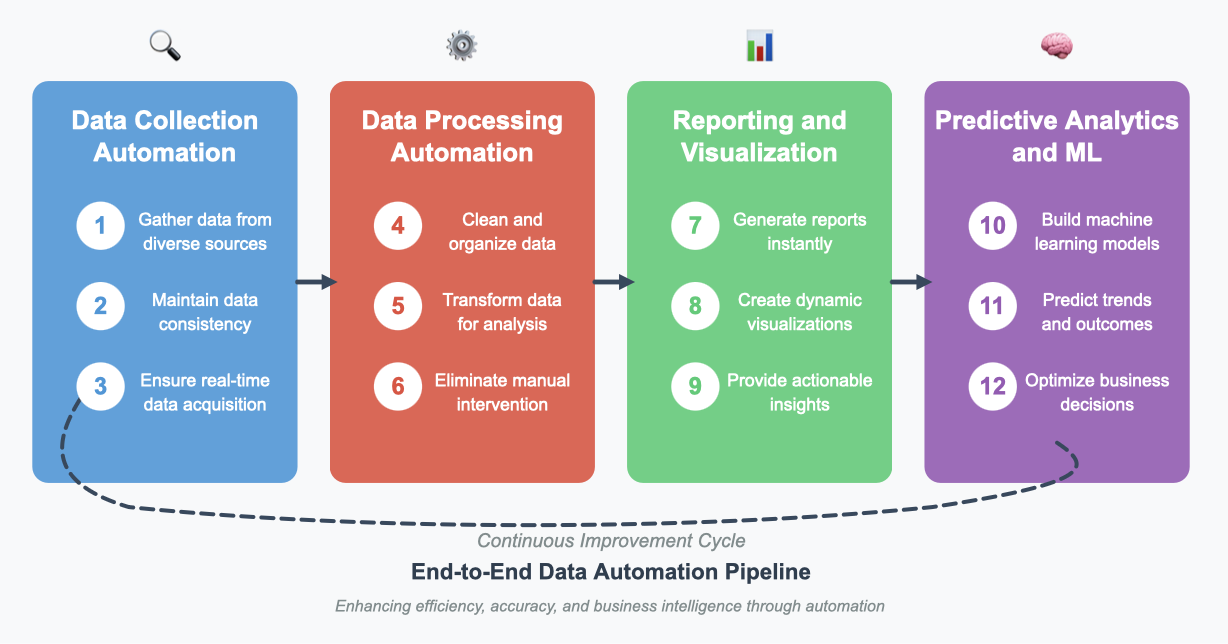
For example, automated data preparation tools can identify and correct inconsistencies, fill missing values, and eliminate duplicates. This not only saves time but also enhances the accuracy of your analytics.
Role of Artificial Intelligence and Machine Learning
Artificial intelligence (AI) and machine learning (ML) are the backbone of augmented analytics. These technologies automate complex processes, making data analysis more accessible and insightful. With AI and ML, you can:
- Automate data preparation and insight generation.
- Receive personalized recommendations tailored to your business needs.
- Detect patterns and trends, enabling predictive decision-making.
- Clean and filter data for deeper analysis.
For instance, AI-driven systems can analyze historical data to forecast future trends, helping you make informed decisions. By integrating AI and ML, augmented analytics transforms raw data into meaningful insights, empowering you to stay ahead in a competitive market.
You can try it out in the demo model below:
Natural Language Processing (NLP) and Conversational Analytics
Natural language processing (NLP) revolutionizes how you interact with data. With advancements like transformer-based models (e.g., GPT-3 and BERT), NLP enables conversational analytics, allowing you to ask questions in plain language and receive precise answers. Key advancements include:
- Transformer-Based Models: Fine-tune tasks with minimal data and training time.
- Multimodal NLP: Process text, images, and speech for enhanced applications like visual question-answering.
- Conversational AI Systems: Engage in natural conversations, widely used in customer service and virtual assistants.
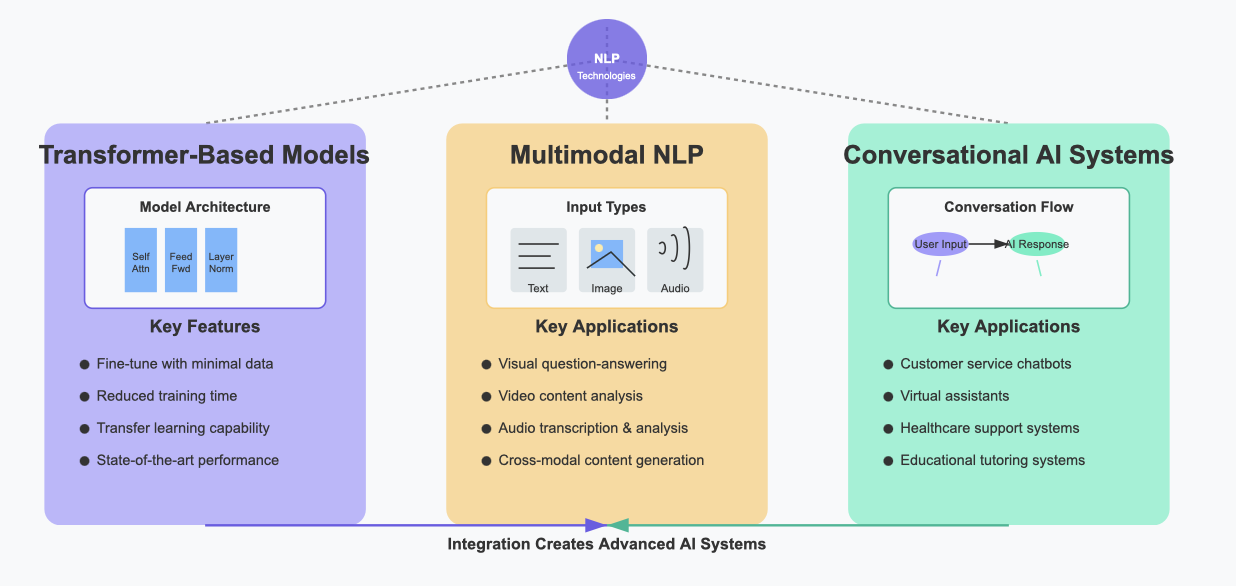
For example, conversational analytics tools can interpret your queries, generate reports, and provide actionable insights in real time. This makes data analytics more intuitive and accessible, even for non-technical users.Module FineBI and FineChatBI can be groundbreaking in this area:
- Contextual understanding: Constantly asking, 'Why is the Q4 return rate rising?' → Which SKUs have the most impact? → When comparing supplier quality data', the system automatically establishes a logical chain of problems
- Multi-modal interaction: Insert commands such as 'export results as PPT' in the conversation to automatically generate presentations with branded templates
- Semantic error correction: When the user enters 'show the amount of consumption in Beijing', the system automatically corrects it to 'sales' and returns the result"
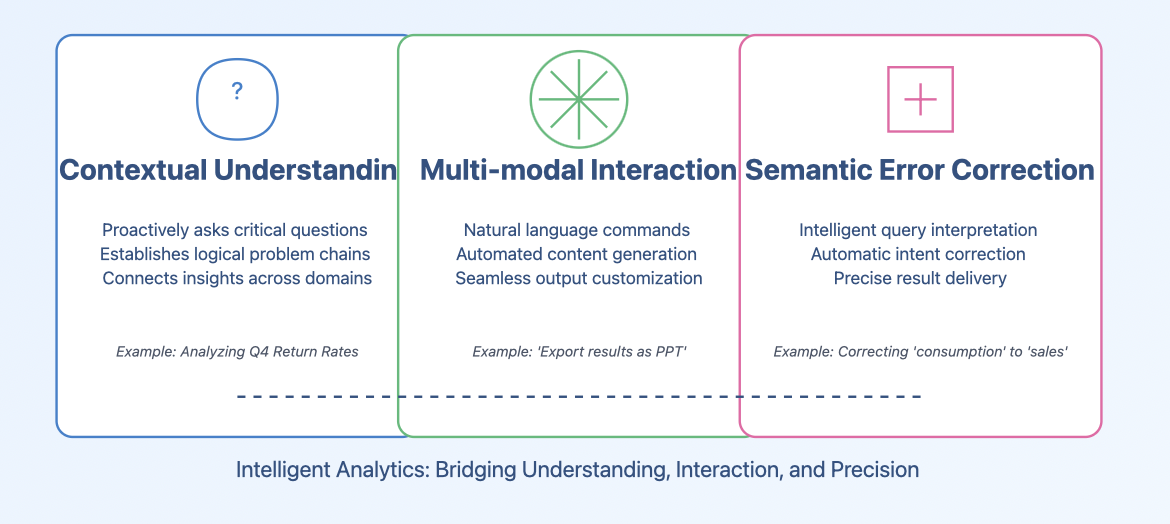
Predictive and Prescriptive Analytics with FineBI
Predictive and prescriptive analytics are essential components of augmented analytics, helping you anticipate future trends and make optimal decisions. FineBI, a self-service business intelligence tool, empowers you to harness these advanced analytics capabilities with ease.
You can try it out in the demo model below:
Predictive Analytics: Anticipating the Future
Predictive analytics uses historical data and machine learning models to forecast future outcomes. With FineBI, you can analyze patterns and trends to predict customer behavior, sales performance, or market shifts. For example, a retail business can use FineBI to forecast seasonal demand, ensuring inventory aligns with customer needs. This proactive approach minimizes risks and maximizes opportunities.
Tip: High-quality data is crucial for accurate predictions. As the saying goes, "garbage in, garbage out." Ensure your data is clean and reliable to achieve meaningful insights.
Prescriptive Analytics: Recommending the Best Actions
Prescriptive analytics goes a step further by suggesting actionable strategies based on predictive insights. FineBI enables you to explore "what-if" scenarios, helping you evaluate the potential impact of different decisions. For instance, a financial institution can use FineBI to determine the best investment strategy by analyzing risk and return scenarios.
Feature | Predictive Analytics | Prescriptive Analytics |
|---|---|---|
Objective | Forecast future trends | Recommend optimal actions |
Example Use Case | Predicting customer churn | Suggesting retention strategies |
FineBI Capability | Machine learning-based trend analysis | Scenario modeling and decision support |
FineBI simplifies these processes with its intuitive interface and robust data integration capabilities. You can connect to diverse data sources, analyze large datasets, and visualize results in real time. This makes advanced analytics accessible to everyone, regardless of technical expertise.
By leveraging predictive and prescriptive analytics through FineBI, you can transform your decision-making process. Augmented analytics becomes a powerful ally, enabling you to stay ahead in a competitive landscape.
How Augmented Analytics Works
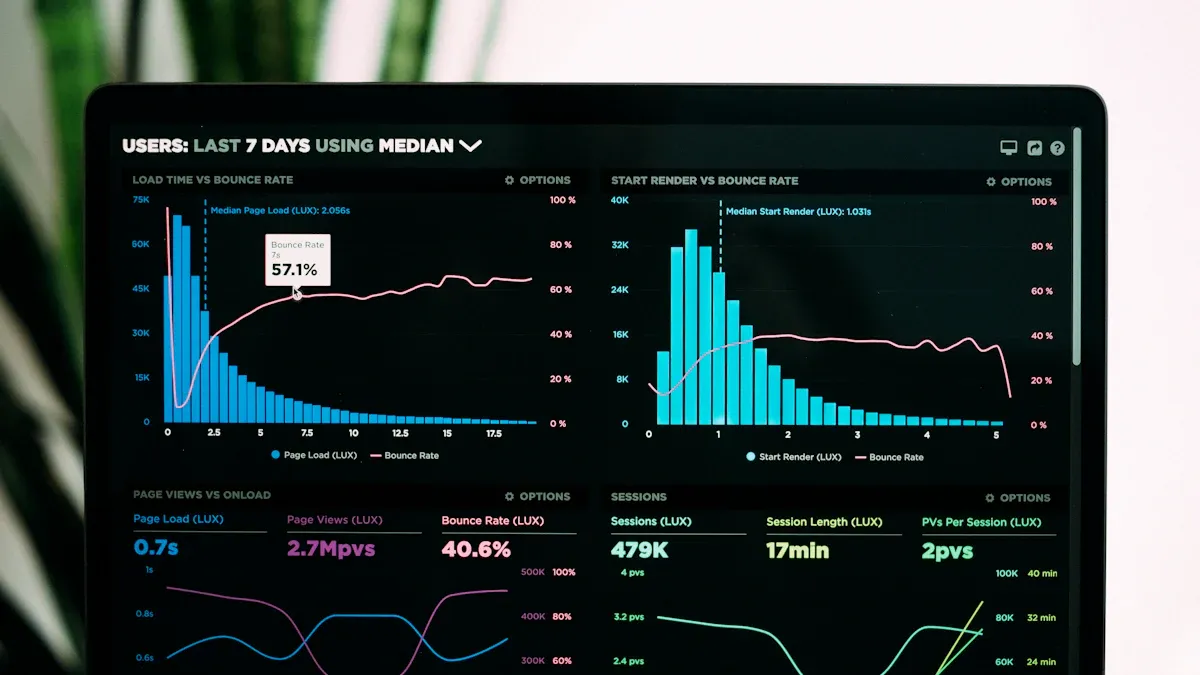
Data Preparation and Integration with FineDataLink
Data preparation is the foundation of augmented analytics. Without clean and integrated data, generating meaningful insights becomes challenging. FineDataLink simplifies this process by enabling you to integrate and transform data from multiple sources into a unified platform. This tool supports over 100 data sources, including relational databases, big data platforms, and cloud services.
FineDataLink automates tasks like real-time data synchronization and ETL (Extract, Transform, Load) processes. For example, you can use it to migrate databases or build real-time data warehouses with minimal latency. Its visual interface makes data integration intuitive, even for non-technical users. By addressing common challenges like data silos and inconsistent formats, FineDataLink ensures your data is analytics-ready.
Tip: Automating data preparation saves time and reduces errors, allowing you to focus on deriving actionable insights.
Automated Insights Generation
Augmented analytics leverages AI and machine learning to automate the generation of insights. Instead of manually analyzing data, you can rely on algorithms to uncover patterns, trends, and anomalies. This automation accelerates decision-making and enhances accuracy.
For instance, in the retail sector, augmented analytics can optimize pricing and promotions based on customer behavior. It can also forecast demand and manage inventory effectively. The table below highlights impactful use cases:
| Use Case | Description |
|---|---|
| Optimize Pricing and Promotions | Utilize augmented analytics to optimize pricing and promotions based on customer behavior. |
| Customer Segmentation and Personalization | Segment customers and personalize marketing using data-driven insights. |
| Demand Forecasting and Inventory Management | Forecast demand and manage inventory effectively with predictive analytics. |
| Fraud Detection and Prevention | Employ machine learning to detect and prevent fraud and anomalies. |
| Customer Loyalty and Retention | Increase loyalty by leveraging sentiment analysis and natural language processing. |
By automating insights generation, you can make data-driven decisions faster and more effectively.
Visualization and Reporting with FineBI

Visualization transforms raw data into understandable formats, making it easier to interpret insights. FineBI excels in this area by offering over 60 chart types and 70 styles. Its drag-and-drop functionality allows you to create dashboards and reports effortlessly.
FineBI supports real-time data analysis, enabling you to monitor key metrics as they change. For example, a financial institution can use FineBI to track credit risk and fraud prevention metrics. Its role-based access control ensures data security, while its collaborative features allow teams to share insights seamlessly.
Example: A healthcare organization can use FineBI to visualize patient outcomes and resource utilization, improving care coordination and reducing costs.
By combining advanced visualization tools with real-time reporting, FineBI empowers you to communicate insights effectively and drive informed decisions.
Continuous Learning and Improvement
Continuous learning and improvement form the backbone of augmented analytics. These systems evolve over time, adapting to new data and refining their performance. By embracing this dynamic process, you can ensure your analytics tools remain relevant and effective.
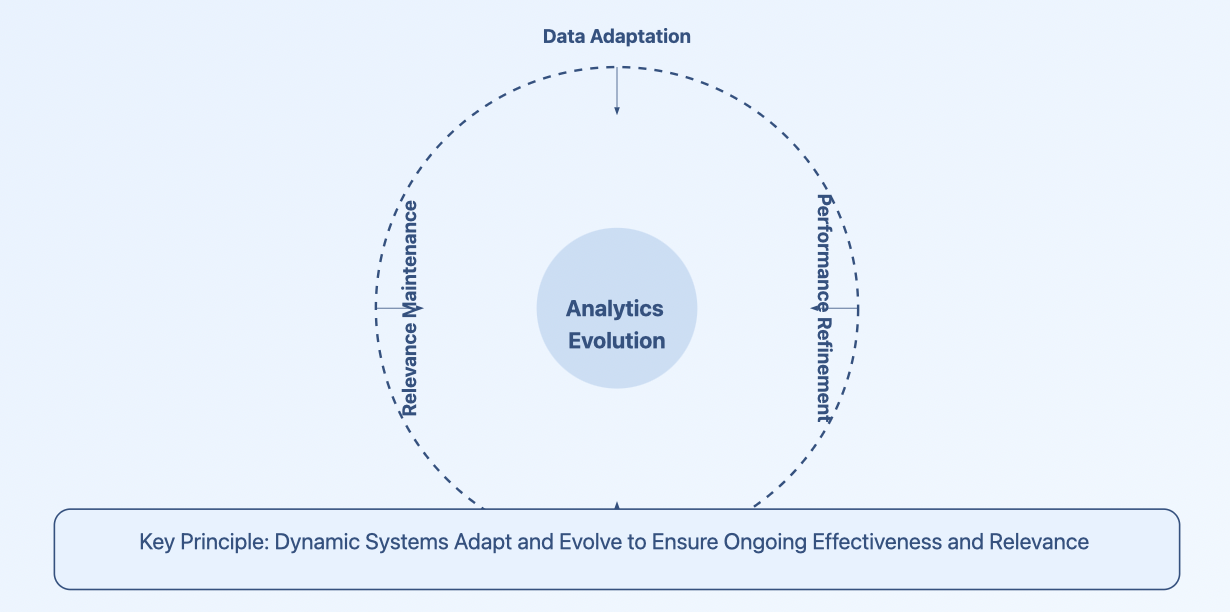
How Continuous Learning Works
Augmented analytics leverages machine learning algorithms that improve with each iteration. As you feed more data into the system, it identifies patterns, corrects errors, and enhances its predictive accuracy. For example, a retail business using augmented analytics to forecast sales will see better results as the system learns from seasonal trends and customer behavior.
Tip: Regularly updating your data sources ensures the system learns from the latest information, keeping insights accurate and actionable.
Benefits of Continuous Improvement
- Enhanced Accuracy: Systems refine their models, reducing errors in predictions and insights.
- Adaptability: They adjust to changes in data trends, ensuring relevance in dynamic environments.
- Efficiency Gains: Automation improves over time, saving you more time and resources.
| Feature | Before Learning | After Continuous Learning |
|---|---|---|
| Prediction Accuracy | Limited to initial training data | Improves with ongoing data input |
| Trend Adaptation | Static and less responsive | Dynamic and highly responsive |
| User Experience | Basic insights | Advanced, actionable insights |
Real-World Example: FineBI in Action
FineBI exemplifies continuous learning by enabling users to refine their analytics processes. Imagine a healthcare organization tracking patient outcomes. Initially, the system might struggle with incomplete data. Over time, as more patient records are integrated, FineBI learns to provide more precise insights, such as predicting recovery times or identifying high-risk cases.
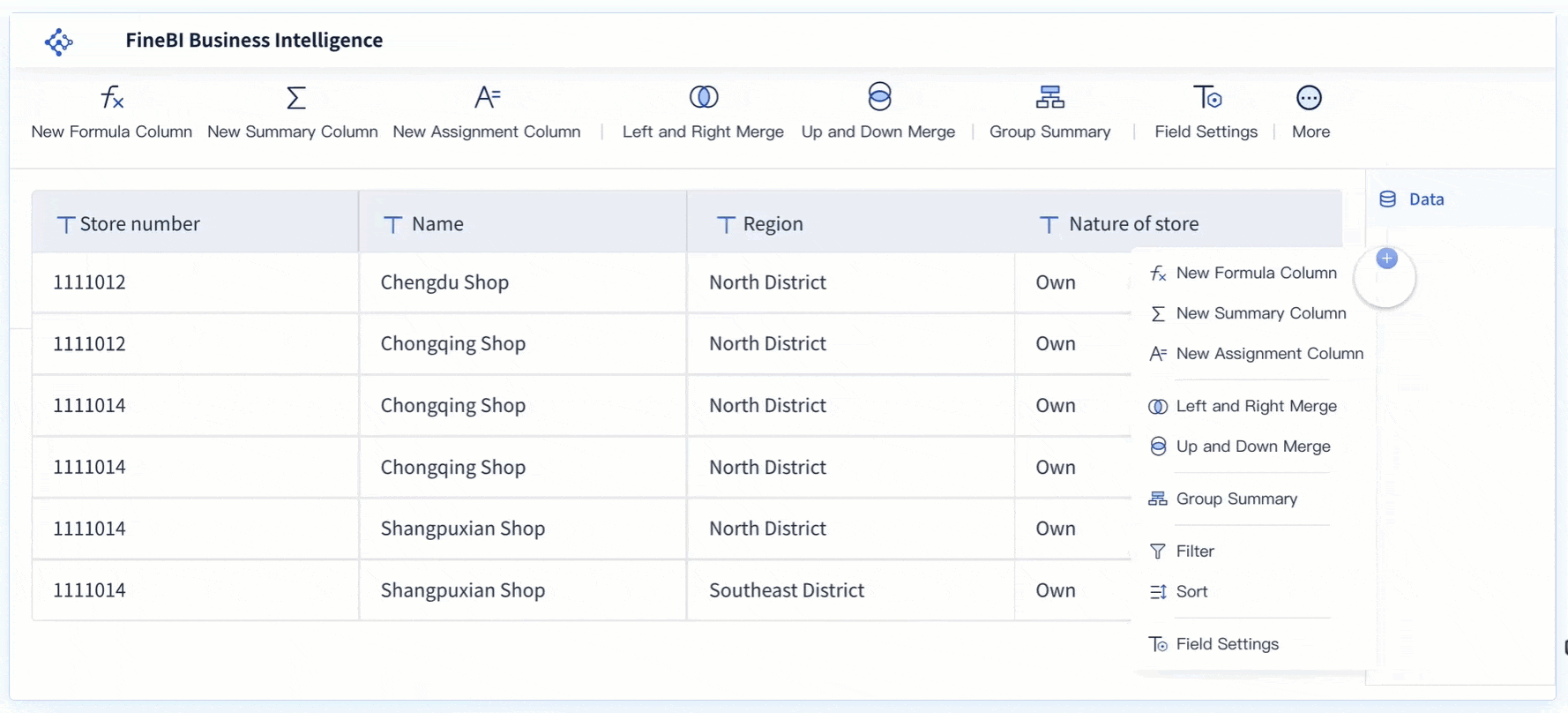
By leveraging augmented analytics tools like FineBI, you can foster a culture of continuous improvement. This approach not only enhances decision-making but also ensures your organization stays ahead in a competitive landscape.
Key Features of Augmented Analytics
Self-Service Analytics with FineBI
Self-service analytics empowers you to explore data independently without relying on IT teams. FineBI simplifies this process by offering an intuitive interface and drag-and-drop functionality. You can connect to multiple data sources, create dashboards, and generate reports effortlessly. This feature democratizes data access, enabling everyone in your organization to uncover insights and make informed decisions.
For example, a marketing team can use FineBI to analyze campaign performance. By visualizing metrics like click-through rates and conversions, they can identify trends and optimize future strategies. FineBI also supports role-based access control, ensuring data security while promoting collaboration.
Tip: Use self-service analytics to reduce dependency on technical teams and accelerate decision-making.
Automated Data Cleaning and Preparation
Data cleaning and preparation often consume significant time and resources. Augmented analytics automates these tasks, allowing you to focus on deriving insights. FineBI and FineDataLink excel in this area by handling tasks like removing duplicates, filling missing values, and standardizing formats.
For instance, FineDataLink integrates data from over 100 sources, ensuring consistency and accuracy. It automates ETL processes, making your data analytics-ready. This automation not only saves time but also improves the reliability of your insights.
| Task | Manual Process | Automated with FineDataLink |
|---|---|---|
| Duplicate Removal | Time-consuming | Instant |
| Missing Value Handling | Prone to errors | Accurate |
| Data Integration | Complex and fragmented | Seamless |
Note: Clean data is the foundation of accurate analytics. Automating this step ensures better results.
Real-Time Insights and Alerts
Real-time insights keep you informed about critical changes as they happen. FineBI enables you to monitor key metrics and receive alerts instantly. This feature is invaluable for industries like finance and healthcare, where timely decisions are crucial.
For example, a financial institution can use FineBI to track credit risk. If a metric exceeds a predefined threshold, the system sends an alert, allowing immediate action. FineBI’s real-time dashboards provide a clear view of your data, helping you stay proactive.

Example: A retail business can use real-time insights to manage inventory during peak seasons, ensuring stock availability and customer satisfaction.
By leveraging these features, you can transform your data into actionable insights, driving better outcomes for your organization.
Scalability Across Large Data Sets
Handling large data sets can be challenging, but augmented analytics makes it manageable. Scalability ensures that your analytics tools perform efficiently, even when data volumes grow exponentially. FineBI and FineDataLink excel in this area, offering robust solutions for processing and analyzing massive datasets.

Why Scalability Matters
Scalability allows you to adapt to increasing data demands without compromising performance. For example, a retail business might experience a surge in customer data during holiday seasons. Without scalable tools, analyzing this data could slow down operations and delay decision-making.
Tip: Choose tools that support high-performance computing and real-time data processing to handle large data sets effectively.
How FineBI and FineDataLink Ensure Scalability
FineBI uses a high-performance computing engine to process massive datasets. It supports over 10,000 users for online viewing, making it ideal for enterprise-level applications. Its real-time analysis capabilities allow you to monitor key metrics as they change, ensuring timely insights.
FineDataLink complements this by integrating data from over 100 sources. It automates ETL processes, reducing the time and effort required for data preparation. Its ability to synchronize data in real time ensures that your analytics remain up-to-date.
| Feature | FineBI | FineDataLink |
|---|---|---|
| Data Processing | High-performance computing engine | Real-time data synchronization |
| User Capacity | Supports over 10,000 users | Integrates 100+ data sources |
| Scalability Advantage | Handles massive datasets seamlessly | Automates ETL for large-scale data |
Real-World Example
Imagine a healthcare organization managing patient records across multiple facilities. FineBI can analyze this data to identify trends in patient outcomes. FineDataLink ensures that data from various sources integrates seamlessly, enabling accurate and timely insights.
By leveraging scalable tools like FineBI and FineDataLink, you can future-proof your analytics infrastructure. This ensures that your organization remains agile and competitive, even as data volumes grow.
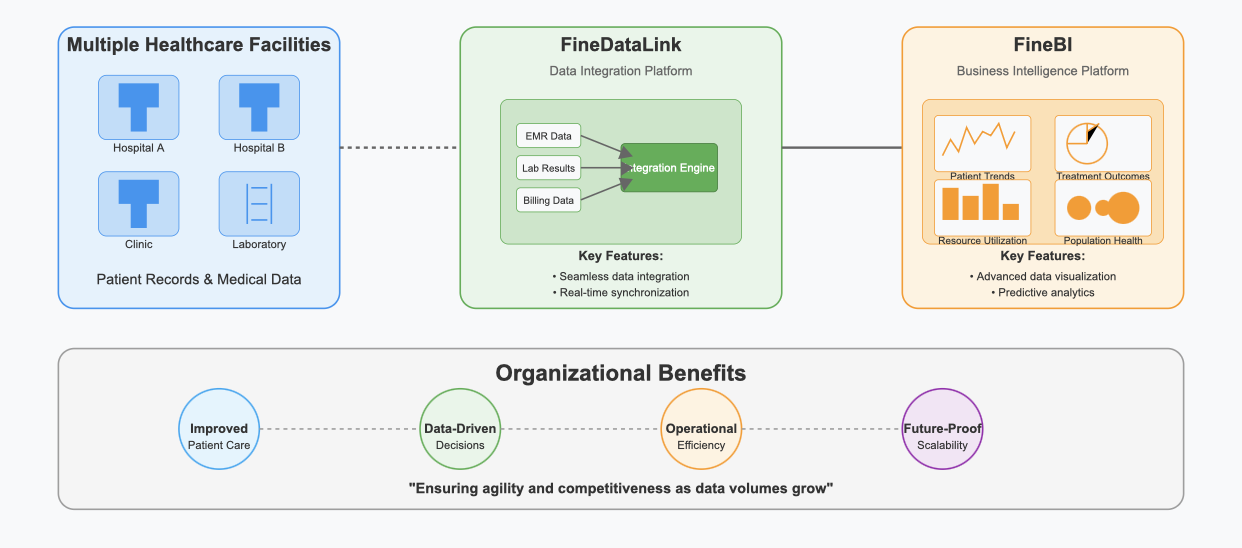
Benefits of Augmented Analytics for Data-Driven Decisions
Improved Decision-Making
Augmented analytics enhances your ability to make informed decisions by providing actionable insights from complex data. It identifies patterns, trends, and anomalies that might otherwise go unnoticed. For example, a retail business can use augmented analytics to predict customer preferences and adjust inventory accordingly. This ensures you stay ahead of market demands.
By automating data analysis, augmented analytics reduces human error and bias. It delivers precise insights, enabling you to focus on strategic planning rather than manual data interpretation. For instance, a healthcare organization can analyze patient data to improve treatment plans and outcomes. This approach transforms your organization into an insights-driven entity, fostering smarter decision-making.
Tip: Use augmented analytics to evaluate "what-if" scenarios. This helps you anticipate outcomes and choose the best course of action.
Enhanced Productivity and Efficiency
Augmented analytics streamlines workflows, saving time and resources. It automates repetitive tasks like data cleaning, preparation, and visualization. This allows you to focus on interpreting insights and implementing strategies. For example, FineBI simplifies data visualization with drag-and-drop functionality, enabling you to create dashboards in minutes.
Organizations using augmented analytics report significant productivity gains. A financial institution, for instance, can automate fraud detection, reducing manual effort and improving accuracy. The table below highlights key productivity benefits:
| Task | Traditional Approach | With Augmented Analytics |
|---|---|---|
| Data Cleaning | Time-intensive, error-prone | Automated, accurate |
| Report Generation | Manual, slow | Instant, real-time |
| Insight Discovery | Limited by human capacity | AI-driven, comprehensive |
By improving efficiency, augmented analytics empowers you to achieve more with fewer resources.
Democratization of Data Insights
Augmented analytics democratizes access to data insights, making them available to everyone in your organization. Tools like FineBI enable non-technical users to explore data independently. This reduces reliance on IT teams and accelerates decision-making processes.
For example, a marketing team can analyze campaign performance without waiting for technical support. They can identify trends, optimize strategies, and improve ROI. This fosters a culture of data-driven decision-making across departments.
Example: A small business can use augmented analytics to segment customers and personalize marketing efforts. This leads to better engagement and higher sales.
By empowering employees with self-service analytics, you transform your organization into an insights-driven organization. This approach ensures everyone contributes to strategic growth.
This is where FineBI's FineChatBI feature comes into play. New employees in the marketing department do not need to learn SQL, they only need to enter 'compare the change in order value between 2023 and 2022 quarters', and the system will immediately generate a dynamic chart with trend annotation, and prompt the intelligent insight that 'the 12% decrease in order value in Q2 is mainly due to the increase in the proportion of promotional orders'.
Cost Savings and ROI
Augmented analytics offers significant cost-saving opportunities while maximizing your return on investment (ROI). By automating data processes and reducing manual effort, it helps you allocate resources more efficiently. This efficiency translates into tangible financial benefits for your organization.
How Augmented Analytics Saves Costs
- Reduced Dependency on IT Teams: Self-service tools like FineBI empower business users to analyze data independently. This reduces the workload on IT teams, saving both time and labor costs.
- Minimized Errors: Automated data cleaning and preparation eliminate human errors. Accurate data ensures better decisions, avoiding costly mistakes.
- Optimized Resource Allocation: Predictive analytics helps you forecast demand and allocate resources effectively. For example, a retailer can use augmented analytics to stock inventory based on seasonal trends, reducing waste.
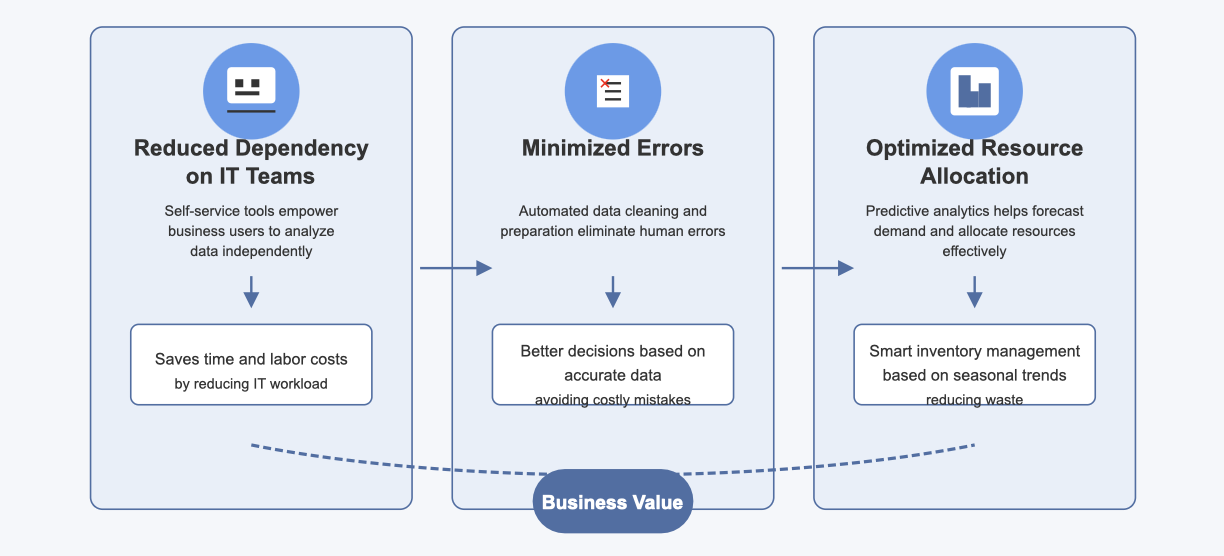
Example: A manufacturing company implemented FineBI to monitor production efficiency. By identifying bottlenecks in real time, they reduced downtime by 15%, saving thousands of dollars annually.
ROI Benefits of Augmented Analytics
Investing in augmented analytics delivers measurable ROI by improving decision-making and operational efficiency. Here’s how:
| Benefit | Impact on ROI |
|---|---|
| Faster Insights | Accelerates decision-making, enabling you to seize market opportunities quickly. |
| Improved Productivity | Automates repetitive tasks, allowing employees to focus on strategic activities. |
| Enhanced Customer Retention | Personalizes customer experiences, increasing loyalty and lifetime value. |
For instance, a financial institution using FineBI reduced fraud detection time by 30%. This not only saved costs but also improved customer trust, leading to higher retention rates.
By adopting augmented analytics, you can achieve long-term financial gains. The initial investment pays off through streamlined operations, better resource management, and increased profitability. It’s a smart move for any organization aiming to thrive in today’s data-driven world.
Challenges and Limitations of Augmented Analytics
Data Privacy and Security Concerns
When you use augmented analytics, protecting sensitive data becomes a top priority. The integration of multiple data sources increases the risk of breaches. For example, customer information stored across various platforms may become vulnerable during data integration. You must ensure that your analytics tools comply with data protection regulations like GDPR or CCPA.
Tip: Use encryption and role-based access controls to safeguard your data. Regular audits can also help identify potential vulnerabilities.
A lack of robust security measures can lead to unauthorized access, which may compromise the trust of your stakeholders. By prioritizing data privacy, you can mitigate these risks and maintain the integrity of your analytics processes.
Dependence on Data Quality
The accuracy of your insights depends heavily on the quality of your data. Poor data quality, such as incomplete or inconsistent records, can lead to misleading analytics. For instance, if a retail business uses outdated sales data, its predictions for future demand may be inaccurate.
| Challenge | Impact | Solution |
|---|---|---|
| Inconsistent Data | Skewed insights | Automate data cleaning |
| Missing Values | Inaccurate predictions | Use tools like FineDataLink |
| Duplicate Records | Redundant analytics efforts | Implement real-time validation |
To overcome this challenge, you should invest in tools that automate data cleaning and preparation. This ensures that your analytics remain reliable and actionable.
Resistance to Adoption and Change
Adopting augmented analytics often requires a cultural shift within your organization. Employees may resist new technologies due to a lack of understanding or fear of job displacement. For example, a marketing team accustomed to traditional methods might hesitate to use self-service analytics tools.
To address this, you should provide comprehensive training and highlight the benefits of augmented analytics. Show your team how these tools can simplify their workflows and enhance their decision-making capabilities.
Example: A financial institution introduced FineBI to its employees. By offering hands-on training sessions, the company eased the transition and improved user adoption rates.
Encouraging a growth mindset within your organization can help you overcome resistance and fully leverage the potential of augmented analytics.
Potential Bias in AI Algorithms
AI algorithms, while powerful, can sometimes produce biased results. This happens when the data used to train these algorithms reflects existing prejudices or lacks diversity. You might encounter this issue in areas like hiring, lending, or even healthcare, where biased decisions can have serious consequences.
How Bias Occurs in AI
Bias in AI often stems from the data it learns from. If the training data contains historical inequalities or underrepresented groups, the algorithm may replicate these patterns. For example:
| Scenario | Potential Bias |
|---|---|
| Hiring Algorithms | Favoring male candidates due to historical data showing more men in leadership roles. |
| Loan Approval Systems | Denying loans to certain demographics based on biased credit history data. |
| Healthcare Predictions | Providing less accurate diagnoses for underrepresented populations. |
Bias can also arise from the way algorithms are designed. If developers unintentionally embed their own assumptions, the system may favor certain outcomes.
Why It Matters
Biased AI can lead to unfair treatment and missed opportunities. For instance, a biased hiring tool might overlook qualified candidates, reducing diversity in the workplace. In healthcare, biased predictions could result in unequal access to treatments.
Tip: Always evaluate the data you use for training AI. Diverse and representative datasets reduce the risk of bias.
Mitigating Bias in AI
You can take steps to minimize bias in AI algorithms:
- Use diverse datasets that represent all groups fairly.
- Regularly audit algorithms for biased outcomes.
- Implement fairness metrics to measure and address disparities.
- Encourage transparency by documenting how the AI makes decisions.
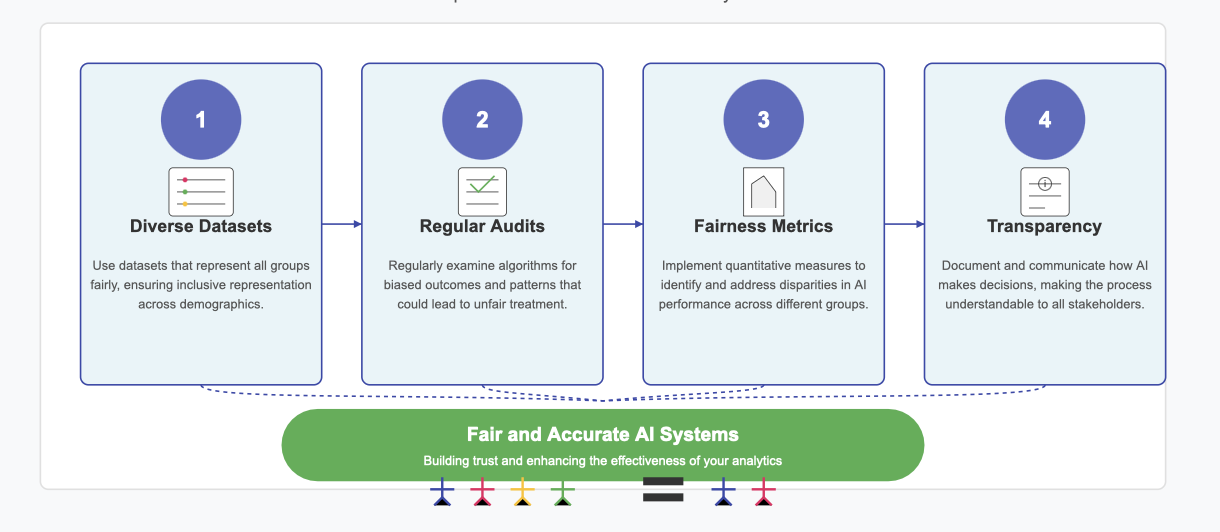
By addressing bias, you ensure that AI systems deliver fair and accurate results. This not only builds trust but also enhances the effectiveness of your analytics.
Real-World Use Cases of Augmented Analytics
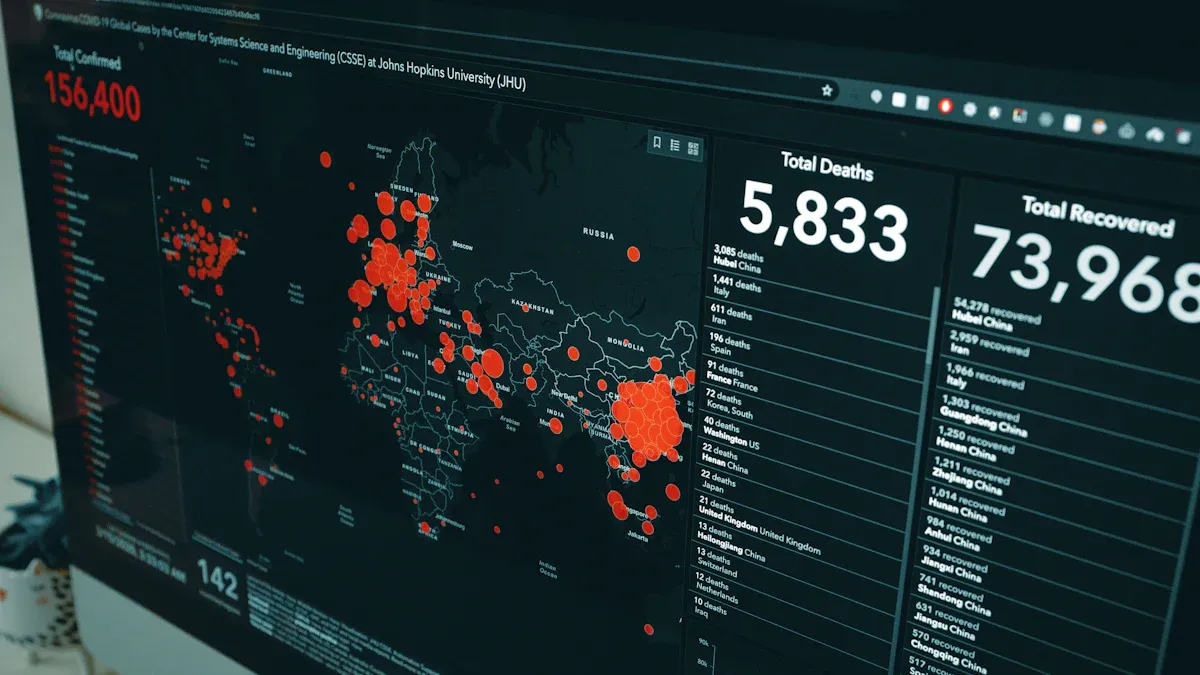
Retail and E-Commerce
In retail and e-commerce, augmented analytics helps you understand customer behavior and optimize operations. By analyzing sales data, you can identify trends and predict future demand. For example, a clothing retailer might use analytics to determine which products will sell best during the holiday season. This allows you to stock inventory efficiently and avoid overstocking or shortages.
Augmented analytics also enhances personalization. By examining customer purchase history, you can create tailored recommendations. For instance, an online store can suggest products based on a shopper's browsing habits. This improves customer satisfaction and increases sales.
| Use Case | Benefit |
|---|---|
| Demand Forecasting | Align inventory with customer needs |
| Personalized Recommendations | Boost customer engagement and loyalty |
| Pricing Optimization | Adjust prices dynamically to maximize profit |
Healthcare and Life Sciences
In healthcare, augmented analytics transforms how you manage patient care and operational efficiency. By analyzing patient data, you can identify patterns that improve diagnoses and treatment plans. For example, hospitals use analytics to predict patient admission rates, ensuring adequate staffing and resources.
Augmented analytics also supports drug development. By processing clinical trial data, pharmaceutical companies can accelerate research and bring new treatments to market faster. Additionally, it helps you monitor patient outcomes, enabling personalized care plans.
Example: A hospital used augmented analytics to reduce patient wait times by analyzing appointment schedules and resource availability. This improved patient satisfaction and operational efficiency.
Financial Services and Banking
In financial services, augmented analytics enhances decision-making and risk management. By analyzing transaction data, you can detect fraudulent activities in real time. For example, banks use analytics to flag unusual spending patterns, protecting customers and reducing losses.
You can also use augmented analytics for customer segmentation. By examining financial data, banks identify high-value customers and offer tailored services. Additionally, predictive analytics helps you forecast market trends, guiding investment strategies.
| Use Case | Benefit |
|---|---|
| Fraud Detection | Minimize financial losses |
| Customer Segmentation | Deliver personalized banking experiences |
| Investment Forecasting | Optimize portfolio performance |
Augmented analytics empowers you to make data-driven decisions across these industries, improving efficiency and outcomes.
Manufacturing and Supply Chain Management
Augmented analytics transforms manufacturing and supply chain management by optimizing processes and improving decision-making. You can use it to monitor production, predict demand, and streamline logistics. These capabilities help you reduce costs and enhance efficiency.
Key Applications in Manufacturing
- Predictive Maintenance: Augmented analytics identifies patterns in machine performance. It predicts failures before they occur, reducing downtime and maintenance costs. For example, a factory can use analytics to monitor equipment and schedule repairs proactively.
- Quality Control: Analytics tools detect anomalies in production data. This ensures consistent product quality and minimizes defects.
- Inventory Management: By analyzing historical sales and market trends, you can optimize inventory levels. This prevents overstocking or stockouts.
Supply Chain Optimization
Augmented analytics enhances supply chain visibility. It integrates data from multiple sources, such as suppliers, warehouses, and transportation systems. This allows you to:
- Track shipments in real time.
- Identify bottlenecks in the supply chain.
- Optimize delivery routes to save time and fuel.
| Use Case | Benefit |
|---|---|
| Demand Forecasting | Align production with market needs |
| Route Optimization | Reduce transportation costs |
| Supplier Performance Analysis | Improve vendor selection and collaboration |
Example: A global electronics manufacturer used augmented analytics to predict demand for its products. This allowed the company to adjust production schedules, reducing excess inventory by 20%.
Marketing and Customer Experience with FineChatBI
FineChatBI revolutionizes marketing and customer experience by enabling conversational analytics. You can interact with your data using natural language, making insights more accessible.
Enhancing Marketing Strategies
FineChatBI helps you analyze customer behavior and campaign performance. By asking questions like, "Which campaign had the highest ROI?" you can receive instant answers. This allows you to:
- Segment customers based on preferences.
- Personalize marketing messages.
- Optimize ad spend for better results.
Improving Customer Experience
With FineChatBI, you can monitor customer feedback and sentiment in real time. This helps you identify areas for improvement and enhance satisfaction. For instance, analyzing customer reviews can reveal common complaints, enabling you to address them promptly.
| Feature | Marketing Benefit | Customer Experience Benefit |
|---|---|---|
| Natural Language Queries | Simplify data exploration | Enable quick issue resolution |
| Sentiment Analysis | Tailor campaigns to audience mood | Understand customer emotions |
| Real-Time Insights | Adjust strategies on the fly | Respond to feedback instantly |
Tip: Use FineChatBI to create a complete analysis loop. Start with descriptive analytics to understand past performance, then move to prescriptive analytics to plan future actions.
A beauty brand uses FineChatBI to achieve precision marketing optimization: when the marketing director asks 'find out the characteristics of high-net-worth customers with a repurchase rate of less than 10% but a customer unit price of more than 2,000 yuan', the system automatically associates orders, customer service conversations and social media data, and outputs the conclusion that '63% of such customers are concentrated in women aged 35-45 who prefer offline experience but lack exclusive consultant follow-up' within 10 seconds, guiding the company to formulate a VIP service upgrade plan, and the repurchase rate increased by 27% within 3 months. By leveraging FineChatBI, you can make data-driven decisions that boost engagement and loyalty. This positions your brand as customer-centric and innovative.
Augmented analytics transforms how you approach data, making it easier to uncover actionable insights and drive data-driven decisions. Experience FineBI's FineChatBI function now and open a new paradigm of intelligent analysis: visit [Free Trial Link], enter 'analyze the causes of customer churn in the past six months', and you will see the system automatically complete the whole process of data correlation, root cause analysis and generation of improvement suggestions - the average response time is only 8.6 seconds, and the accuracy rate is 92.3% (based on customer measured data)
It empowers your organization to stay competitive by automating analytics and delivering smarter recommendations. Addressing challenges like data quality and privacy ensures you fully leverage its potential. As businesses continue to embrace digital transformation, augmented analytics will play a pivotal role in shaping a future where data becomes your most valuable asset.
Click the banner below to also experience FineBI for free and empower your enterprise to convert data into productivity!
Continue Reading About Data Analysis
Why Care About Data Platforms? Find Out Here!
Understanding Descriptive Analytics: What It Is and How It Works
Step-by-Step Guide to Setting Up a Data Analytics Framework
Write a Killer Visual Analysis Essay in 2025!
FAQ

The Author
Lewis
Senior Data Analyst at FanRuan
Related Articles

10 Best Retail Analytics Software Platforms for Retailers
Compare the 10 best retail analytics software platforms for retailers to boost sales, optimize inventory, and gain actionable customer insights.
Lewis
Dec 16, 2025

11 Best Tools for Research Analysis for Academics
Compare the 11 best tools for research analysis to boost academic and professional research efficiency, data management, and collaboration.
Lewis
Dec 11, 2025

10 Best Market Research Data Analysis Tools to Try This Year
See the top 10 market research data analysis tools to boost insights, streamline workflows, and make smarter business decisions this year.
Lewis
Dec 11, 2025





